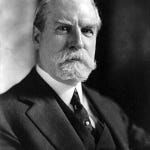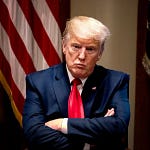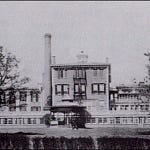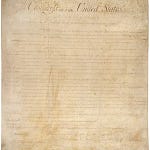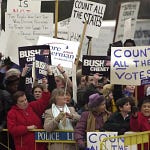Hello and welcome to a weekend edition of Minimum Competence, we’re calling a Maximum Minimum Competence episode. Essentially, time permitting and given a major legal news story, we’ll try to get you a bit more up to speed than we can in our short form daily news show.
This one? It’s on money. Namely, how it’s created, who creates it, and what limits the amount in circulation. Spoiler: the answer to none of those, directly, is the Federal Reserve.
Why, why, why “the money’s not here …. Your money’s in Joe’s house! Right next to yours!” But, that isn’t how money works – George Bailey owes us an explanation if that is his real name. In lieu of George showing up and explaining it to us, we can take a high level look at how money is created. This examination is timely, as commentators and some policy makers seem to imagine the Federal Reserve can simply step in and curtail the amount of money in circulation effectively pressing the big red “Stop Inflation” button – but the truth is much more nuanced. The Federal Reserve doesn’t so much control the flow of money as it controls the interest rate one bank must pay another to borrow money; in sum, it controls the cost of money.
You were probably taught the same basic lesson Jimmy Stewart delivers to mid-bank-run Bedford Falls residents. The bank gives you interest on money you keep in your savings account because they aggregate all the savings accounts together and use those to issue mortgages so folks can buy homes, auto loans for cars, and the like. Your interest is a portion of the interest they receive on your lent out money, and the cycle continues.
Except that’s almost exactly backwards.
Deposit accounts don’t create lending opportunities, lending creates deposit accounts. The It’s a Wonderful Life version of banking would cast banks as being little more than entities that connect people with extra money to lend with people looking for money to borrow. The reality is banks do most of the money creation in the modern economy. If you’re wondering why, then, you’ve never seen a giant minting machine churning out bills in the lobby of your local Wells Fargo, then perhaps we should begin at the beginning.
What is “money?”
The above-referenced cash is but one type of three: currency, central bank reserves and bank deposits. They all represent, in physical or abstract form, an amount owed from one individual or entity to another. So the very first thing we need to do in order to get our arms around how money actually works is dispense with the notion that “adding money” to the economy necessitates printing cash – it can, but needn’t, and usually doesn’t. The creation of a bank deposit, for instance, can be every bit the creation of money as printing a greenback.
The important takeaway is an understanding that, for every dollar in a deposit account somewhere, there needn’t be a physical dollar bill in the real world. “Money” in the economy includes currency, central bank reserves and bank deposits.
How is money “created?”
Now that we have decoupled the idea of “money” from physical bills and coins, we can explore how money can be created.
The Federal Reserve is the central bank of the United States and it is tasked with controlling the monetary system. By way of explaining its role, a quick earth science lesson digression: do you know why marshlands are especially ecologically important? They act as sponges, taking on additional water during periods of heavy rainfall and slowly releasing the water back into the surrounding environment during dry periods. Without them, during a heavy rainfall, much water would be lost to runoff as the ground became saturated and impermeable. Marshlands act as buffers, converting what would be wasted floodwaters into long term life-sustaining hydration.
The Fed is the marshland of the monetary system. When the Fed sees fit to increase the money supply, it buys Treasury bonds from commercial banks and deposits the cost of purchasing those bonds in the banks’ deposit accounts – no cash need be printed. They can also purchase other similar types of accounts on the open market to the same effect. But their actions are diffuse and rely on knock-on effects to achieve results. The same goes for their adjusting of the interest rate, it doesn’t mandate the rate a bank must charge on a loan to an individual, it just sets the interest rate one bank will pay another for borrowing from its reserve account.
But wait, that sounds like the Fed is doing the money creation – how can a bank do the same?
The piece of information that brings together the disparate threads we have discussed is: banks don’t only lend out the money they have reserves for, their reserves represent a mere fraction of their total debts. Put differently, if somewhat simplistically, if a bank has $10 in deposits, they’ll typically be free to lend out as much as $100. Their reserve accounts need only have 10% of their outstanding debts on hand.
So let’s look at a dollar traveling through the system. The Fed decides that $1, yes one more dollar, needs to be added to the economy and then everything will be dandy. The Fed purchases a Treasury bill from Bank X for $1, putting $1 on the deposit side of X’s ledger (remember, no physical currency is involved here). Bank X, subject to a 10% reserve requirement, is then free to lend out, that is create deposits, representing up to $10. The Fed “created” $1 but the commercial bank, X, “created” $9.
The picture becomes much clearer when one imagines an actual transaction. First, imagine a bank with no debts and no credits – a newborn baby bank. Jane Borrower takes out a mortgage with the bank to buy a house, the mortgage is for $100,000. The bank makes a deposit into the seller’s account for the purchase price, $100,000, and marks in their ledger that they have a $100,000 outstanding debt. At the end of the day, they need only have $10,000 cash on hand, which represents the 10% reserve amount they require. But where has the other $90,000 come from? It is tied up in the value of the house, which is the collateral for that loan. The bank has just converted a house, wood and nails and siding and dirt, into money.
Why don’t banks just create money infinitely, then?
Here the Fed steps in again, but not in the way you might think. The Fed also sets the interest rate banks can expect to see as a return on their money placed in reserve accounts in the central bank. This represents the amount of money one bank needs to pay another bank for borrowed reserve funds, overnight. Thus, when a bank has more liabilities than assets to a point below the required reserve percentage, 10%, it can borrow reserves from another bank and pay the interest rate set by the Fed for the benefit of doing so.
Banks would like to have assets to represent every liability, and they try to do so – at the retail level this looks like selling customers on deposit accounts – but the market realities are that much borrowing and lending must occur overnight between banks. The Fed-set interest rate, thus, is quite impactful. A bank that lends too much may run the risk of said lending being rendered unprofitable by the interest paid to other banks to meet reserve requirements.
Thus, the Fed only indirectly sets the amount of lending commercial banks will do – by setting the “cost” of their borrowed reserve money.
Concluding Thoughts
If you’re getting a vaguely nauseated feeling in the pit of your stomach, like you suddenly awoke to find you live in a house of cards – take heart! The realization that there isn’t a dollar bill representing every dollar in deposit accounts and central bank reserves is only alarming because you believe the physical dollar bill to be something more than an IOU. It isn’t.
Since the United States came off the gold standard formally in 1971 – that is to say, after that there was not gold bullion worth one dollar backing every dollar bill. Again, you may feel the room beginning to spin and a slight queasiness in your stomach, as that means the dollar bill is not backed by anything representing real value. But expand your mind one more level of abstraction up and ask yourself, how is a piece of gold any more truly valuable than a dollar bill? They both derive value from the perception of others that they are valuable, not from any physically real “value” attribute. There may not even be any such thing as true value.
So the dollar is only worth something because people agree it is. The Fed doesn’t create most of the money in the economy, commercial banks do, and deposit accounts are not aggregated to make loans, loans are used to make deposit accounts. To top it all off, George Bailey’s notion of how his savings and loan worked was way off the mark. Is nothing real?
Well, thankfully for George Bailey, Zuzu’s petals were. And thankfully for us, other arrows in the government’s quiver can provide real and sustainable relief. Chief among them are actions that will support investment now that gives rise to insulation for consumers from the sorts of costs that are currently causing the biggest pocketbook pinch – things like energy and electric vehicles. The pain of inflation is felt most acutely by consumers most vulnerable owing to rising costs of goods necessary for day to day life, so decoupling those goods from the most volatile sectors of the economy can go a long way towards protecting consumers from the next, inevitable, inflationary period.







